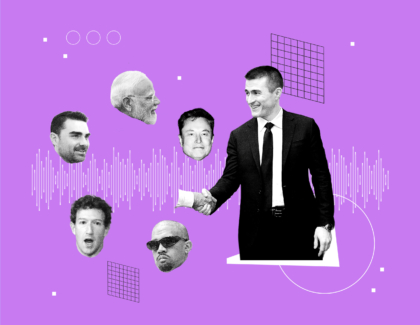Sign up for the daily CJR newsletter.

Bruce Brown is is executive director of the Reporters Committee for Freedom of the Press, and has argued numerous First Amendment cases before US courts.
By now, everyone knows the feds have been handing out record numbers of subpoenas to journalists hoping to scare them into giving up their sources. The troubles of New York Times reporter James Risen, the most well-known of these besieged journalists, remain unresolved almost seven years after the Bush administration first knocked on his door with a subpoena to appear before a grand jury.
There is another recent subpoena fight that has flown under the radar but ought to be brought into fuller view. It should be a wake-up call for anyone who cares about press freedom to heed a complaint that judges have been making since the Supreme Court looked at this issue 40 years ago–that journalists can’t prove that their sources dry up when the reporters they leak to are stalked by process servers.
The latest subpoena fight began in the summer of 2009 when Mike Levine, then a reporter for Fox News, wrote a story about the federal government probing links between Somali Muslims in Minneapolis and Al Qaeda. Citing law enforcement sources, Levine reported about grand jury indictments in the investigation while they were still sealed. The government successfully obtained pleas from several defendants and then went on to publicly tout the victory, but the leak set off alarms.
By early in 2011, the Justice Department had subpoenaed Levine, saying that it needed to know the identity of the law enforcement sources cited in his article. Levine moved to quash the subpoena, saying he promised his sources confidentiality. And the government sought to enforce it, saying that federal laws may have been broken.
All sound familiar? Levine’s case is but a piece in the onslaught of press subpoenas that have defined the Obama administration. But nothing was known publicly about this specific case until last May, when Levine, now at ABC News, wrote about it on the network’s website. Then last month, US District Court Judge Royce Lamberth, who sits in DC, unsealed the docket.
Both from Levine’s account and court records, we learned that in July 2011, Lamberth denied the motion to quash. We also learned that the Justice Department in the end never forced Levine to testify. In April 2012, almost three years after Levine’s Somali story ran, prosecutors said they were withdrawing the subpoena. They offered no explanation as to why.
Levine’s case is more than just another example of the administration trying to force journalists to identify their sources. It stands out in part because of a statement by Lamberth in rejecting Levine’s arguments. The judge looked to a passage from the 1972 Supreme Court ruling in Branzburg v. Hayes, the one and so far only time that the press and the government have clashed over the issue at the nation’s highest court. In the passage, Justice Byron White wrote for a narrow majority in allowing prosecutors in a drug probe to obtain evidence from reporters trying to claim they were protected from testifying by the First Amendment. White said there simply wasn’t enough empirical evidence to show that subpoenaing journalists would have a chilling effect on their sources.
“Estimates of the inhibiting effect of such subpoenas on the willingness of informants to make disclosures to newsmen are widely divergent and to a great extent speculative,” White said. The majority was “unclear how often and to what extent informers are actually deterred from furnishing information when newsmen are forced to testify before a grand jury.”
In the decades since White drew this tough line, judges besides Lamberth have picked up on this skepticism about the real-world impact of subpoenas on journalists and sources. But at a time when efforts to guarantee protection for sources are at a low–Risen’s case was turned back by a federal appeals court last year and the Supreme Court denied review this summer–newsrooms should be trying to prove what they claim. This is the era of big data, and reporters must find ways to give courts large doses of it in support of their contention that sources will dry up if their identities are revealed through the subpoenaing of journalists.
The empirical studies have been few and far between. In 1971, law professor Vince Blasi, now at Columbia University, wrote the first report of its kind on these issues. After surveying hundreds of journalists, Blasi noted that it was difficult to quantify precisely the extent to which sources were scared off by the threat of subpoenas, but his polling of the industry showed that many reporters perceived that to be the case.
Thirty years later, a study by the Reporters Committee for Freedom of the Press documented the number of subpoenas to news organizations, finding that subpoenas had a significant impact on journalistic independence. The study also showed that the members of the media often changed their newsgathering practices out of necessity to avoid the negative effects of a subpoena.
Most recently, in 2008, RonNell Andersen Jones, a law professor at Brigham Young, published a fresh look at the subpoena scene with the aim of evaluating the need for shield laws. She found an uptick in the number of demands from both prosecutors and civil litigants for confidential information.
There are reasons to wonder why something that would seem as self-evident as source intimidation when journalists are exposed to subpoenas would require any hard proof at all. In his concurrence in the 2005 Judith Miller case, for example, DC Circuit Judge David Tatel wrote that it was a “commonsense proposition” that “requires no empirical support.” Gary Pruitt, the President and CEO of the Associated Press, said in the wake of last year’s disclosure of a secret DOJ subpoena for AP phone records that “longtime trusted sources have become nervous and anxious about talking with us–even on stories unrelated to national security.”
The Supreme Court itself has not exactly been consistent on when it will recognize a chilling effect in First Amendment cases. But if courts such as the one in Mike Levine’s case are still echoing Justice White’s call for empirical proof, then journalists should be marshaling facts on the ground.
Yes, there are arguments to be made from casebooks. But there is also data to gather and present showing how legal rules affect the flow of news to the public. In Google’s “right to be forgotten” case, that means cataloguing the take-down requests it receives. Over a period of years, a picture will emerge of knowledge the public can no longer easily access on the Internet because of the European Union’s ruling on the issue.
For reporters and editors seeking to prove the existence of a chilling effect, the challenges are in many ways more daunting because they are trying to demonstrate not what has been lost but what will not be published in the first place.
A methodological knot thus lies at the heart of this project:
How do you show through concrete evidence that the unwillingness of sources to step forward is due to the lack of a reporter’s privilege? It won’t be easy, but a handful of subpoena studies over the course of 40 years is clearly not enough to make the case to today’s dubious bench. Nor are the affidavits of individual reporters in specific cases that their own dealings with sources will be harmed if confidences are pulled out of them.
The courts need to be presented with a broader picture. Annual snapshots of subpoenas served on journalists–across the entire industry–should be only the beginning. New efforts must be mounted to survey sources themselves to validate Tatel’s “commonsense proposition” that subpoenas chill whistleblowing. Newsroom number crunchers should be turning their attention to building indexes of stories that would not have been possible without the cooperation of confidential sources.
Tedious and complicated work, perhaps, but we must show the courts that a privilege is not only right as a matter of law and policy but is also compelled by the data. Forty years after Branzburg, judges are still not convinced.
Has America ever needed a media defender more than now? Help us by joining CJR today.






